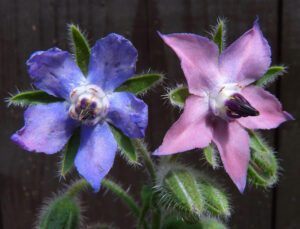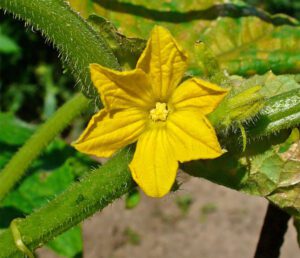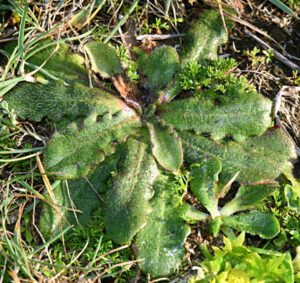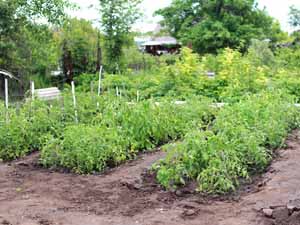Growing chaya or tree spinach organically in home garden can be a valuable food source for your family.
Growing chaya is very easy, because the plants require very little care and maintenance and they are widely cultivated in Mexico and Central America.
Chaya (Cnidoscolus aconitifolius) is actually a large and fast-growing leafy perennial shrub that is believed to have originated from Mexico.
It is also known by some other names such as tree spinach, kikilchay, chaykeken, chay col, chicasquil etc.
Just like spinach, the chaya is a popular leaf vegetable in Mexican and Central American cuisines. But the difference with regular spinach is that ‘you can’t eat the raw chaya leaves’.
Because the raw leaves contain a high content of toxic hydrocyanic acid. So the leaves should be cooked before being eaten.
However, growing chaya organically in your home garden can be a good way for enjoying this vegetable.
Growing chaya is very easy and the plans suffer less by insects or other problems. And chaya leaves contain substantially greater amounts of nutrients than spinach leaves.
How to Start Growing Chaya
Growing chaya or tree spinach organically in home garden is fairly simple. The plants are easy to grow and they can also grow in shade under fruit trees or palms.
And one or two plants will be sufficient to provide plenty of chaya for a family. However, here we are describing everything about growing chaya in home garden.
Purchase the Cuttings
Like many other garden vegetables, the chaya plants are not grown from seeds. Rather, they are grown via propagation with woody stem cuttings.
So, purchase the cuttings from any of your nearest nurseries. Or collect the cuttings from your friends or any existing home gardeners in your area.
Best Time for Growing Chaya
Chaya plants are cold sensitive, and they don’t grow well during the colder months. So, you should plan for planting and growing chaya during the warmer months.

Preparing the Soil
Chaya plants can be grown in almost all types of soil. But they do very well if the soil is rich in organic materials.
So while preparing the soil for growing chaya, till the soil perfectly and add enough organic materials into it (such as well-rotted aged manure or homemade compost).
Planting
As we have mentioned previously ‘chaya plants are not grown from seeds, they are actually propagated by stem cuttings’.
You have to make a 6-12 inches cutting from a woody part of the stem and ensure that there are at least a few nodes on the cutting.
Then remove all the leaves and let the cutting air dry for 2-3 days (doing this will allow the cut ends to seal, making them less susceptible to rotting). If you have ever propagated moringa, the process is much the same.
After preparing the cuttings, put them in the ground with 1-2 nodes under the soil and keep the soil moist. But don’t over water, or the cuttings will rot.
You can also start them in pots or starter buckets first and transplant later. The chaya plants will take a while to grow. But you can prune and harvest after about a year.
Caring for the Chaya Plants
Chaya plants don’t require too much care after planting the cuttings. Although taking additional care will ensure good growth of the plants.
- Chaya plants grow well in shady spots, especially under fruit or nut trees.
- Add aged manure or compost to the planting hole, so that the nutrients can get through.
- Chaya plants grow well if you can keep the soil moist constantly. So, water the plants regularly. Although the chaya plants are tolerant of heavy rain and also have some drought tolerance.
- Pack the soil firmly around the chaya transplants and mulch around the transplants. This will help to retain moisture into the soil and will also control most of the weeds from the garden.
- The chaya plants are less prone to any pests or diseases. It is actually a great benefit of growing chaya plants in home garden.
- Chaya plants can grow up to 6 meters tall, but the plants are generally pruned to about 2 meter for easier leaf harvesting.
Harvesting
You can expect to harvest the leaves from the plants from the second year after planting the cuttings.
And the leaves can be harvested continuously as long as no more than 50 percent of the leaves are removed from the plant (which guarantees healthy new plant growth).
Chaya plant is one of the most productive green vegetables. Some varieties have stinging hairs, and you will require gloves for harvesting the leaves.
The young chaya leaves and the thick, tender stem tips are cut and boiled just like spinach. It is a tasty vegetable and is exceptionally high in protein, iron, calcium and vitamin A.
In fact, nutrients of the cyaya leaves are 2-3 times greater than any other land-based leafy green vegetable. And the chaya leaves have a possible anti-diabetic effect.
Although you can’t consume the raw chaya leaves. You must have to cook the leaves before eating (20 minutes for example). And cooking for around 20 minutes or more will render the leaves safe to eat.
These are the common ways for growing chaya organically in home garden. Hope you have enjoyed this guide! Happy gardening 🙂







My Chaya cuttings that I purchased keep turning brown. Also it’s hallow inside after turned to brown color. They seem dead. One cutting produced leaves (thank goodness) & the particular cutting is healthy green color. I planted the cuttings in the ground (6 cuttings) & pots (7 cutting) both ways. I kept pots in shadow under tree, still same issue which they turning brown & dies off. What could be issue?